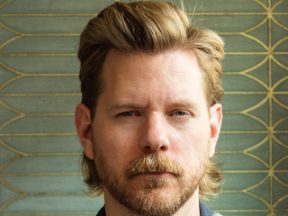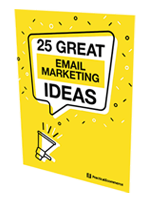Chris Williamson is a modern-day polymath with a fitting podcast. It’s called “Modern Wisdom.” Launched in 2018, it has experienced a whopping 30 million downloads across 400 episodes.
He told me, “We talk about human nature, marketing, philosophy, life, life hacks, biohacking, fitness, health, pretty much everything.”
The podcast appears on YouTube, Spotify, and Apple Podcasts, among other portals. He’s on leading social channels, and he’s started an email newsletter.
“Modern Wisdom” is a media sensation, in other words. In our recent conversation, he and I discussed the challenges of nonstop content production, growth tactics, and more.
Our entire audio discussion is embedded below. The ensuing transcript is edited for length and clarity.
Eric Bandholz: It’s always fun talking with other podcasters. Tell us about your show.
Chris Williamson: I run “Modern Wisdom,” a podcast from the U.K. with roughly 400 episodes to date. I’ve interviewed prominent guests such as authors Ryan Holliday, James Clear, and Seth Godin. We talk about human nature, marketing, philosophy, life, life hacks, biohacking, fitness, health, pretty much everything.
I’m also a club promoter by trade. I’ve spent much time filling nightclubs with young guys and girls in the U.K. who want to go out and get drunk. And that’s given me an interesting overview of how marketing works, especially with brand building. That’s really what merchants are competing on.
It might seem strange going from club promotions to a podcast. There is a connection, however.
Bandholz: Why podcasts?
Williamson: I enjoyed guesting on podcasts. The best way to do more is to have my own show. It’s similar to folks who convert avocations into occupations. Someone once gave me good advice for what to do in life. He said, “Think about what your friends ask you to do. If they ask for your help in relationships, maybe you’re a good dating coach. If it’s business needs, then perhaps you’re a business coach.”
I love having conversations. So I decided to start the podcast. It’s been three and a half years, 400 episodes, 30 million downloads — I’m not slowing down.
I’m doing three episodes per week now. I initially did one a week.
Bandholz: How do you line up three people a week?
Williamson: I book my guests about two months in advance. I can see where I’ve got gaps. The more prominent the guest, the harder to nail down.
The worst-case scenario is when guests reschedule at the last minute or don’t show up.
One concern I had with increasing the frequency is that it would spread the same number of plays over more episodes — more work for the same exposure. Fortunately, my audience listens to each installment for the most part.
I’ve got advertisers on the show. The more episodes, the more ad inventory. And with more listeners, I can get away with going from one ad per show to three, max. I’m not a fan of mid-roll ads.
In terms of earnings, I can now hire an assistant. My video guy can spend more time on the project because he’s better remunerated. We’ve got a guy looking after social. So I’m slowly building the team.
Bandholz: How do you grow a podcast?
Williamson: YouTube is fantastic for growth. Any podcaster that isn’t using YouTube is missing out. It’s difficult to grow an audio platform alone because there’s no “up next” auto-play. There’s nothing trending. There are no suggested podcasts.
The best way I’ve found to grow the audio plays is by crushing YouTube. We focus on it. It’s the wide end of our acquisition funnel.
That said, link to the audio when you tag a guest online. One play on audio is worth about 100 on YouTube. The same goes for subscribers. We’ve got about a quarter of a million subscribers on YouTube. That many on audio would be unbelievable. So it’s a matter of discovering new listeners and filtering them down to audio listeners.
If I discover a new podcast on YouTube, I’ll subscribe on Spotify or Apple Podcasts. I’m not going to watch every one of them, but I might listen.
Bandholz: Are you producing your episodes with YouTube in mind?
Williamson: They’re optimized for both — video and audio. We’ve stepped up the quality on YouTube over the past 18 months. I’m filming on a lovely DSLR camera. We’ve got a compelling intro and outro. We’re making use of end cards and tags. We rebranded and redesigned the thumbnails. We did that for YouTube, but we also get good audio episodes.
Our growth on YouTube is purely organic, I should add.
Bandholz: So it’s full episodes on YouTube and then clip them for audio.
Williamson: Yes. Watching an hour and a half conversation is a huge commitment. Listening to shorter clips is much easier. If the clip is interesting, they may watch the full episode.
Plus, repurposing from the main podcast video into clips with different formats works well. It’s the same audience that’s following on YouTube, Instagram, and TikTok. If your team understands the edit, your voice, and what you want, the whole thing becomes an endless flywheel of content. Record your long-form piece and split it up for YouTube, Instagram, TikTok, whatever.
It’s an infinite content engine. A guest once used the perfect analogy. He said, “It’s like you write a book and sell it by the sentence.” So whatever brand you are, produce long-form or even medium-form content and then divvy it up.
Bandholz: Who decides how to clip the content from the master version?
Williamson: The social media team can do whatever they want. We have a full-time consultant who understands my messaging. He listens to the show, which, incidentally, is a competitive advantage. If they listen to it because they want to, your staff is motivated and aligned. So the social team has full autonomy. However, I decide the critical YouTube stuff — tags, titles, thumbnails.
I’m all for outsourcing tasks. But you can take that too far. There’s a reason I’m saying certain things and addressing specific topics. My team needs to understand the essential points and purpose. Otherwise, it’s on me to get it right.
Every time I’ve seen content producers entirely outsource the critical decisions, their channel underperforms and becomes soulless. It’s obvious that it’s not coming from the creator.
Bandholz: Is your revenue solely advertising? Any ecommerce?
Williamson: No ecommerce. Advertising pays the bills. I much prefer growing revenue through more plays. One of the biggest things that we did over the last 18 months was launch a weekly email newsletter, which I love. We’re up to about 25,000 subscribers with an open rate of about 40%.
The newsletter is called “3 Minute Monday.” It’s an insight into something I’ve been pondering. Plus, there’s a life hack in each issue.
Bandholz: What do you visualize your life being? After you’ve reached a nirvana business, what’s next?
Williamson: I want to focus on conversations with people. There’s not much in my life now that I would get rid of. I like what I do. I like doing the research, for instance.
My two longtime business partners — one for nightclubs and my video guy for Modern Wisdom — are both friends. They were friends that became business partners. I know that that’s fraught with danger, but I’ve managed to get lucky.
Bandholz: Where can people learn more about you?
Williamson: Modern Wisdom is on Apple Podcasts, Spotify, wherever else you listen. We’ve discussed my YouTube and Instagram channels. Plus, I’m on Twitter. I’ve published on my website a free list of 100 books — fiction and nonfiction — that have influenced my thinking.





